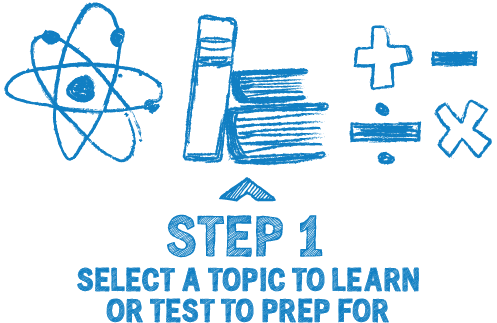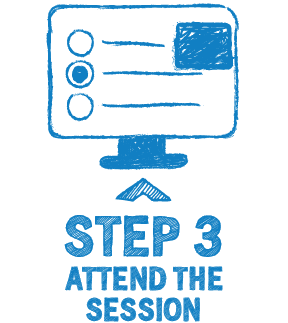What are Molecules?
Grade 6 Science Worksheets
A molecule is a group of two or more atoms that are chemically bonded together. These atoms may be of the same element or may be of different elements.
Table of Contents:
- What are Molecules?
- Properties of Molecules
- Formation of Molecules
- Molecular Compounds
- FAQs
Molecules - Grade 6 Science Worksheet PDF
This is a free printable / downloadable PDF worksheet with practice problems and answers. You can also work on it online.
|
Untimed | |
Sign up with your email ID to access this free worksheet.
"We really love eTutorWorld!"
"We really love etutorworld!. Anand S and Pooja are excellent math teachers and are quick to respond with requests to tutor on any math topic!" - Kieran Y (via TrustSpot.io)
"My daughter gets distracted easily"
"My daughter gets distracted very easily and Ms. Medini and other teachers were patient with her and redirected her back to the courses.
With the help of Etutorworld, my daughter has been now selected in the Gifted and Talented Program for the school district"
- Nivea Sharma (via TrustSpot.io)
What are Molecules?
A molecule is a group of two or more atoms that are chemically bonded together. These atoms may be of the same element, as in the case of diatomic molecules like oxygen (O2) and nitrogen (N2), or they may be of different elements, as in the case of water (H2O) and carbon dioxide (CO2).
Molecules can be made up of covalently bonded atoms, where the atoms share electrons to form a stable structure, or they can be made up of ionic bonds, where positive and negative ions are attracted to each other.

Molecules are the basic building blocks of many substances in the world around us, from the air we breathe to the food we eat.
They can exist as gases, liquids, or solids, and their physical and chemical properties depend on the type and number of atoms that make up the molecule, as well as the way those atoms are arranged.
In general, molecules are much smaller than compounds, which are made up of larger groups of atoms that are held together by chemical bonds.
While all compounds are made up of molecules, not all molecules are compounds, as some may be made up of atoms of the same element, such as diatomic molecules like O2 and N2.
Properties of Molecules
The chemical and physical properties of molecules depend on the types and arrangements of atoms within the molecule. Here are some of the main chemical and physical properties of molecules:
Chemical Properties
- Reactivity: The chemical reactivity of a molecule depends on the functional groups present in the molecule, which determine the types of reactions the molecule can undergo.
- Acidity/Basicity: Molecules can be acidic or basic depending on the presence of acidic or basic functional groups.
- Stability: Molecules with strong chemical bonds tend to be more stable, while those with weak chemical bonds are more reactive and less stable.
- Polarity: The polarity of a molecule depends on the distribution of electrons within the molecule, which affects the way it interacts with other molecules.

Physical Properties
- Melting and Boiling Points: The melting and boiling points of a molecule depend on the strength and type of intermolecular forces between the molecules.
- Solubility: The solubility of a molecule in a solvent depends on the polarity and size of the molecule, as well as the polarity of the solvent.
- Density: The density of a molecule depends on the mass and volume of the molecule.
- Optical Properties: Molecules can be optically active, meaning they rotate the plane of polarized light, depending on their three-dimensional structure.
- Electrical Conductivity: Some molecules, such as acids and bases, can conduct electricity when they are dissolved in water.
In general, the chemical and physical properties of molecules are determined by the types and arrangements of atoms within the molecule, as well as the intermolecular forces between molecules. These properties play an important role in the behavior and function of the molecules in biological, chemical, and physical systems.
Formation of Molecules
Atoms make up molecules by forming chemical bonds with each other. There are three types of chemical bonds: covalent bonds, ionic bonds, and metallic bonds.
In a covalent bond, atoms share electrons in order to fill their valence shells and become more stable. In an ionic bond, one atom donates an electron to another atom, forming ions that are held together by electrostatic attraction.
In a metallic bond, atoms share a “sea” of electrons that flow freely throughout the metal lattice.

Here are some examples of molecules formed by different types of chemical bonds:
- Water (H2O) is a covalent molecule formed by the sharing of electrons between two hydrogen atoms and one oxygen atom.
- Sodium chloride (NaCl) is an ionic molecule formed by the transfer of an electron from a sodium atom to a chlorine atom.
- Carbon dioxide (CO2) is a covalent molecule formed by the sharing of electrons between one carbon atom and two oxygen atoms.
- Methane (CH4) is a covalent molecule formed by the sharing of electrons between one carbon atom and four hydrogen atoms.
- Oxygen (O2) is a covalent molecule formed by the sharing of electrons between two oxygen atoms.
In each of these examples, the atoms combine to form a molecule with unique chemical and physical properties. The way the atoms are arranged within the molecule determines how the molecule interacts with other molecules, and what kinds of chemical reactions it can undergo.
“There have been times when we booked them last minute, but the teachers have been extremely well-prepared and the help desk at etutorworld is very prompt.
Our kid is doing much better with a higher score.”
6th Grade Tutoring
eTutorWorld offers Personalized Online Tutoring for Math, Science, English, and Standardised Tests.
Our Tutoring Packs start at just under $22.49 per hour, and come with a moneyback guarantee.
Schedule a FREE Trial Session, and experience quality tutoring for yourself. (No credit card required.)
Molecular Compounds
Molecules form compounds by joining together through chemical bonding. Compounds are substances composed of two or more different types of atoms that are chemically bonded together in specific ratios.
There are two main types of chemical bonds that form compounds: ionic bonds and covalent bonds. In an ionic bond, one or more electrons are transferred from one atom to another to form ions that attract each other due to opposite charges. In a covalent bond, two or more atoms share electrons to form a stable molecule.
Here are some examples of compounds formed from molecules:
Water (H2O) is a covalent compound composed of two hydrogen atoms and one oxygen atom. The hydrogen and oxygen atoms combine to form a stable molecule of water, which is a liquid at room temperature.
Carbon dioxide (CO2) is a covalent compound composed of one carbon atom and two oxygen atoms. The carbon and oxygen atoms combine to form a molecule of CO2, which is a gas at room temperature.
Ammonia (NH3) is a covalent compound composed of one nitrogen atom and three hydrogen atoms. The nitrogen and hydrogen atoms combine to form a molecule of NH3, which is a gas at room temperature.
Methane (CH4) is a covalent compound composed of one carbon atom and four hydrogen atoms. The carbon and hydrogen atoms combine to form a molecule of CH4, which is a gas at room temperature.
In each of these examples, molecules combine to form compounds through ionic or covalent bonding. The unique properties of the resulting compounds are determined by the way the molecules are arranged and bonded together.
Do You Stack Up Against the Best?
If you have 30 minutes, try our free diagnostics test and assess your skills.
FAQS
What is a molecule?
A molecule is a group of two or more atoms that are held together by chemical bonds. Molecules can be composed of atoms of the same element or of different elements.
What are the properties of molecules?
Molecules have both chemical and physical properties. The chemical properties of a molecule determine how it interacts with other molecules and what kinds of chemical reactions it can undergo. The physical properties of a molecule include things like its size, shape, and melting and boiling points.
What are the different types of molecules?
There are several types of molecules, including diatomic molecules (made up of two atoms of the same element), polyatomic molecules (made up of more than two atoms), and organic molecules (containing carbon atoms).
How do molecules form?
Molecules form through the process of chemical bonding, where atoms share electrons or transfer electrons between them to form a stable molecule.
What is a molecular formula?
A molecular formula is a way of expressing the number and types of atoms in a molecule. It indicates the number of each type of atom in the molecule using chemical symbols and subscripts.
How are molecules different from compounds?
Compounds are defined as substances that are formed when two or more elements mix chemically, keeping the ratio of mass constant. It contains two or more elements. Various kinds of elements that occur in a constant ratio of atoms make up compounds. The individual properties of elements diminish when they mix, and new characteristics are formed of the new product.
The fundamental unit of a compound that retains its properties are known as molecules. Molecules are made up of two or more atoms. We know that an atom is the smallest unit of matter but a molecule is the smallest unit that can retain both the physical as well as chemical properties. Molecules can be broken into their constituents, i.e., the atoms that make up the molecules.
What is the importance of molecules in everyday life?
Molecules are important in everyday life because they make up the substances we use, consume, and interact with every day. They are involved in chemical reactions that help sustain life, and they are the building blocks of all matter in the universe.

Kathleen Currence is one of the founders of eTutorWorld. Previously a middle school principal in Kansas City School District, she has an MA in Education from the University of Dayton, Ohio. She is a prolific writer, and likes to explain Science topics in student-friendly language. LinkedIn Profile
Affordable Tutoring Now Starts at Just $22.49
eTutorWorld offers affordable one-on-one live tutoring over the web for Grades K-12. We are also a leading provider of Test Prep help for Standardized Tests (SCAT, CogAT, MAP, SSAT, SAT, ACT, ISEE, and AP).
What makes eTutorWorld stand apart are: flexibility in lesson scheduling, quality of hand-picked tutors, assignment of tutors based on academic counseling and diagnostic tests of each student, and our 100% money-back guarantee.
Whether you have never tried personalized online tutoring before or are looking for better tutors and flexibility at an affordable price point, schedule a FREE TRIAL Session with us today.
*There is no purchase obligation or credit card requirement
Grade 6 Science Worksheets
- Inquiry process
- Nature of Science
- Scientific Inquiry
- Inquiry, Analysis and Problem Solving
- Ethical Practices
- Science and Society
- Biotic and Abiotic Factors
- Impact of Organisms
- Adaptation
- Spheres of Earth
- Natural Resources
- Environmental Issues
- Conservation of Earth
- Understanding Technology
- Abilities To Do Technological Design
- Structure of Earth
- Solar System
- Rocks and Fossils
- Earth Systems
- Plate Tectonics
- Evolution
- Magnetic Field of Earth
- Geologic Time
- Materials and Processes That Shape a Planet
- Astronomy
- Ecology
- Energy
- Kinetic and Potential Energy
- Energy Transfer
- Matter and its Structure
- States of Matter
- Physical and Chemical Changes
- Force and Motion
- Electricity and Magnetism
- Wave Interactions
- Sound
- Light
- Introduction to Life Science
- The Origin & History of Life On Earth
- Plant and Animal Cells
- Parts of a Cell
- The Cell Cycle
- How Living Organisms Get Energy
- Classification of Organisms
- How Plants Grow & Reproduce
- The Human Respiratory System
- The Human Cardiovascular System
- The Human Digestive System
- The Human Endocrine Systems
- The Human Nervous System
- The Human Muscular System
- The Human Skeletal System
IN THE NEWS

Our mission is to provide high quality online tutoring services, using state of the art Internet technology, to school students worldwide.
Online test prep and practice
SCAT
SSAT
ISEE
PSAT
SAT
ACT
AP Exam
Science Tutoring
Physics Tutoring
Chemistry Tutoring
Biology Tutoring
Math Tutoring
Pre-Algebra Tutoring
Algebra Tutoring
Pre Calculus Tutoring
Calculus Tutoring
Geometry Tutoring
Trigonometry Tutoring
Statistics Tutoring
Quick links
Free Worksheets
Fact sheet
Sales Partner Opportunities
Parents
Passive Fundraising
Virtual Fundraising
Our Expert Tutors
Safe and Secure Tutoring
Interactive Online Tutoring
After School Tutoring
Elementary School Tutoring
Middle School Tutoring
High School Tutoring
Home Work Help
Math Tutors New York City
Press
©2022 eTutorWorld Terms of use Privacy Policy Site by Little Red Bird
©2022 eTutorWorld
Terms of use
Privacy Policy
Site by Little Red Bird










